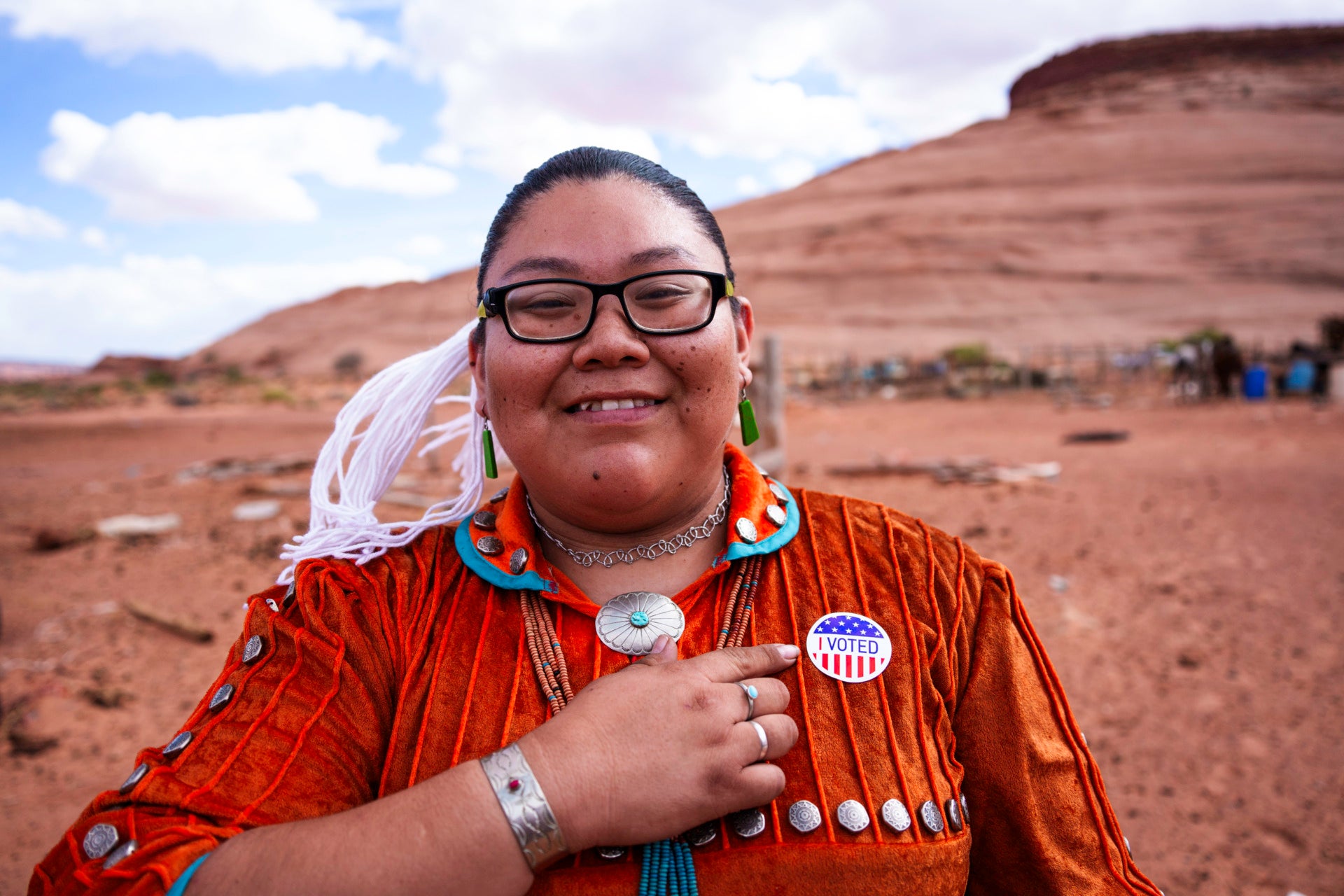There are many takeaways from the 2018 midterm elections regarding the effects of Latino voters. Deeply contested races, recounts in many states, and significant numbers of Latinos elected to positions at the local, state, and federal levels are some of the most striking outcomes. Polling and initial data indicate that Latinos came out in record numbers. Many Latinos voted in a midterm election for the first time—27 percent—according to a survey conducted by the Pew Research Center. This engagement suggests a broader message for those working on getting Latinos to the polls: sustained local outreach, candidates, and messaging matter.
Last month, the Aspen Institute Latinos and Society Program and the UCLA Latino Policy and Politics Initiative convened a panel to discuss the key outcomes and messages concerning the Latino electorate in this year’s midterm elections. Speakers included Tom Perez, chair of the Democratic National Committee, Tatiana Matta, former candidate for California’s 23rd congressional district; Dr. Matt Barreto, faculty director of the UCLA Latino Policy and Politics Initiative (LPPI); and Daniel Garza, president of the Libre Initiative.
Latinos and Society Executive Director Abigail Golden-Vazquez moderated the discussion kicking off the conversation by asking the group why it’s so difficult to vote in this country. “I just don’t understand why we don’t make voting just a little bit easier for people,” she said. “If we want to have a democracy that works, that’s participatory, why is it so hard?”
Perez jumped in with a pledge from the Democratic party to redouble their efforts to make it easier for eligible people to vote. The other panelists spoke on the importance of connecting with voters. Having a candidate acknowledge issues important to a particular community can be a powerful tactic for building support. But, as Matta noted, not all Latinos place the same priority on each issue. “We all have different backgrounds, and we think differently about life,” she said. “You have Latinos who are Republicans, and you have Latinos who are Democrats and Independents. So how do you get to everyone? It’s talking about what connects us.”
Garza believes the Republican party fell short with the electorate this election season. Their candidates did not connect with voters as well as they should have and candidates matter. “[For those that] go into our churches and to our chambers of commerce and the universities and make that connection, you’re going to get incredible numbers [of voters],” he said.
It’s undeniable that Latino voters made incredible gains in early voting this election with a 174 percent increase over 2014. As voting data continues to come in and is further analyzed, we will learn more about how many Latinos showed up to the polls. While efforts to bolster civic engagement by Latinos seems to have paid off, the panelists agreed that there are still many gains to be made. Barreto shared that millions of potential voters are continuously ignored by the major political parties and organizations corralling voters simply due to the fact that they are labeled as low-propensity voters. “You need to focus on new voters, unlikely voters, voters who haven’t been contacted, and I think that started to shift this cycle,” he said.
This shift will help the Latino electorate fulfill their voting potential. By placing an emphasis on bringing in first-time voters and not solely focusing on high-propensity voters, campaigns will reach important new audiences. In other words, candidates and political organizations must convince Latinos to embrace enfranchisement. Ensuring voters get to the polls involves three crucial steps:
First, potential voters must register to vote. There are many reputable organizations that work on facilitating voter registration drives. There were strong registration efforts leading up to this midterm election, which clearly helped increase numbers at the polls.
Secondly, the potential voter needs to be convinced that the candidates on the ballot care about issues that are also important to voters. As Sonja Diaz, Executive Director of LPPI, said in her closing remarks, “Issues Latinos care about go beyond immigration.” This step is largely the responsibility of the candidate and their campaign— they must show a vested interest in the communities they wish to represent.
Lastly, the potential voter needs to be compelled to cast a ballot, either by filling out and mailing in the ballot or making time to go to their polling place. This last piece is connected to the second step of feeling inspired, but also involves a sense of civic responsibility and pride in being able to have their voice heard. Groups working on get-out-the-vote efforts must focus on the full continuum of this approach in order to ensure that more people are registered and vote.
Voting is one of the best ways to advocate for one’s community. Let’s hope that momentum from the midterms ramps up in 2020 and beyond.
“We’re not always going to agree on everything,” said Hector Barreto, chairman of the Latino Coalition and board member of the Latinos and Society Program. “But we all care very deeply about this beloved community of ours and about this country.”


